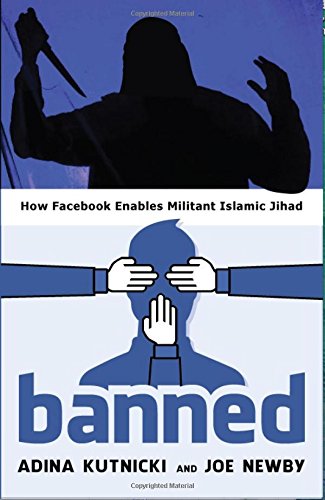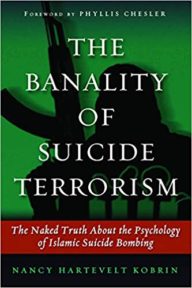
Profile of Haji Abdullah, who succeeded Abu Bakr al-Baghdadi as ISIS’s new leader
Published: 30/01/2020 in
The Meir Amit Intelligence and Terrorism Information Center
- Haji Abdullah is an Iraqi Sunni Muslim of Turkmen origin.[2] He holds a degree in sharia law from the University of Mosul. During Saddam Hussein’s regime, he served as an officer with the rank of lieutenant colonel in the Iraqi army. In 2004, he was incarcerated by US forces in Camp Bucca detention facility in southern Iraq, where he made the acquaintance of Abu Bakr al-Baghdadi, the future leader of ISIS. The detention facility is where he probably adopted Salafist jihadi Islam. After the establishment of ISIS, Haji Abdullah enjoyed Al-Baghdadi’s support and confidence, until he became one of ISIS’s senior figures.
- There are many similarities between Haji Abdullah’s biography and that of Al-Baghdadi: they are both Iraqi Sunnis (although Al-Baghdadi is of Arab origin while Haji Abdullah is of Turkmen origin); they both studied Islamic religious law (sharia) at Iraqi universities (Al-Baghdadi held a higher degree than Haji Abdullah); they were both incarcerated by the US in Camp Bucca; they both fought against the American forces in Iraq and both fought in the ranks of ISIS since it was established. In the ITIC’s assessment, these are prominent characteristics of other senior figures in ISIS’s leadership.
- Haji Abdullah’s close relations with Al-Baghdadi, his thorough knowledge of Islamic religious law and extensive military and combat experience acquired in the ranks of ISIS since its establishment – all these, in the ITIC’s assessment, laid the foundation for his appointment as the caliph who was chosen to succeed Al-Baghdadi. Indeed, Haji Abdullah receives a jihadi organization spread in many geographical areas throughout Africa and Asia. However, in the ITIC’s assessment, at least for the time being, ISIS’s activity will probably focus on the core countries of Iraq and Syria (in practice, most of ISIS’s terrorist and guerrilla activity takes place in western Iraq and eastern Syria). Other scopes of activity, such as the jihadi attacks in ISIS’s provinces in Africa and Asia and ISIS’s terrorist network abroad, will continue to function but will occupy a lower place in ISIS’s overall priorities.
Milestones in Haji Abdullah’s life[3]
- Haji Abdullah is an Iraqi Sunni Muslim, about 53 years old. He was born to a Turkmen family in the town of Tal Afar, northern Iraq (about 70 km west of Mosul), a region predominantly populated by the Turkmen minority[4]. He is said to have at least one son (The Guardian, January 20, 2020; Al-Hurra, January 20, 2020 and October 27, 2019; Al-Jazeera, October 28, 2019).
- Haji Abdullah studied sharia law (Islamic religious law) at the University of Mosul. He has at least an undergraduate degree. He served as a lieutenant-colonel in the Iraqi army during Saddam Hussein’s regime and acquired military experience (The Guardian, January 20, 2020; Al-Hurra, January 20, 2020 and October 27, 2019; Al-Jazeera, October 28, 2019). After the American invasion of Iraq, when the branch of Al-Qaeda (from which ISIS arose at a later stage) established itself in Iraq, Haji Abdullah served as the organization’s senior religious authority (The Guardian, January 20, 2020; Al-Hurra, January 20, 2020).
- In 2004, Haji Abdullah was detained by the American forces in Iraq and was jailed in the Camp Bucca detention facility in southern Iraq. ISIS leader Abu Bakr al-Baghdadi was also held there. It appears that at Camp Bucca, Haji Abdullah became acquainted with Al-Baghdadi, adopted Salafist jihadi Islam, and helped Al-Baghdadi to shape ISIS’s future nature.
- After his release from Camp Bucca, Haji Abdullah took part in the fighting of the jihadists against the American forces in Iraq. In the announcement on his appointment as Al-Baghdadi’s successor, Haji Abdullah was described as “one of the symbols of jihad,” with extensive combat experience in fighting against the United States. He was also said to be familiar with the US methods of fighting and deception (audiotape released by ISIS’s new spokesman, Telegram, October 31, 2019).
- It seems that on the basis of their long-time acquaintance and the common past record, Haji Abdullah enjoyed the support and confidence of Al-Baghdadi and he gradually ascended in ISIS’s hierarchy, until he became one of the senior figures in the organization. According to reports, Haji Abdullah supervised several of ISIS’s terrorist activities overseas. He also played a major role in the enslavement of the Yazdi minority, inter alia by providing Islamic religious justification for that (The Guardian, January 20, 2020; Al-Hurra, January 20, 2020 and October 27, 2019; Al-Jazeera, October 28, 2019).
- In August 2019, several months before Al-Baghdadi was killed, the US Department of State offered a reward of up to $5 million for reliable information on the location of three senior ISIS operatives who, according to assessments, were supposed to succeed Al-Baghdadi. Haji Abdullah was one of them (US Department of State, August 21, 2019). All three originate from Iraq, a prominent characteristic in the DNA of the ISIS leadership.

US Department of State’s notice: A reward of up to $5 million to anyone providing information on the location of three senior ISIS operatives. Haji Abdullah is seen on the left (US Department of State, August 21, 2019)
Haji Abdullah’s codenames and titles
- So far, Haji Abdullah has not identified himself either by a codename or by his real name. Officially he is called Abu Ibrahim al-Hashemi al-Qurashi. Selecting the nickname Al-Hashemi (i.e., a descendant of the Hashem family, the family of the Prophet Muhammad) and Qurashi (i.e., belonging to the tribe of Quraysh, Muhammad’s tribe) was intended to provide Haji Abdullah with legitimacy as he is not from an Arab origin, but a Turkman. Choosing Haji Abdullah as ISIS leader although he is not Arab may indicate that no suitable candidate with similar qualifications was found in ISIS after Al-Baghdadi was killed (for according to Muslim tradition, there is a clear preference for a caliph of an Arab descent).
- According to the tape announcing the appointment of ISIS’s new leader, the titles attributed to him are Caliph, Imam, and Emir al-Mu’minin (Leader of the Faithful)[5] (Telegram, October 31, 2019). The use of these terms implies the following: Caliph (Khalifa) is the head of the Islamic State; the word originates from the Arabic word for replacement, i.e., the replacement of the Prophet Muhammad. Emir al-Mu’minin is a title which only refers to the Khalifa, noting his position as the one who leads the Muslim believers. The term Imam denotes the head of the Islamic community, referring less to the issue of political rule and underlining the religious status (even though there is no separation between religion and state in Islam). All these titles are intended to emphasize Haji Abdullah’s senior position in both the religious and the political spheres.
[1] Regarding the codename Abdullah Qardash, there are differences of opinion about the question whether this name refers to Amir al-Salbi. There are Iraqi security officials who assert that this is the name of another ISIS operative, who was killed two years ago (The Guardian, January 20, 2020). In the current study, the ITIC uses the more common codename Haji Abdullah. ↑
[2]The Turkmens are a nation and a Turkic ethnic and tribal group. They originate from Central Asia (like the Turks). The Turkmens reached the countries of the Middle East – Iraq, Iran, Syria and Turkey – at least as long ago as the 11th century and preserved their language and culture while retaining their sectarian and tribal ties in these countries. In Iraq, there is a relatively large minority comprising about 3,000,000. The town of Tal Afar, where Haji Abdullah was born, is the stronghold of the Turkmens in Iraq (Wikipedia). ↑
[3] The ITIC’s information on Haji Abdullah’s biography is incomplete. So far, he hasn’t released any audio or videotapes which could provide us with additional details on his character and worldview. ↑
[4] The Turkmens as an ethnic group do not have a special status in ISIS, but apart from Haji Abdullah, there were other senior figures of Iraqi Turkmen origin who were prominent among ISIS’s leadership: one of them was an operative codenamed Abu Bakr the Turkmen, who was killed in an American airstrike in the Tal Afar area in Iraq (September 10, 2015); another ISIS operative of a Turkmen origin, also from Tal Afar, is Arkan Abdul Rahman Hussein Mohammad, who was recently detained by the SDF in the Euphrates Valley in Syria. ↑
[5] These were also the titles of Abu Bakr al-Baghdadi. He also had another title, the Renewing Imam (Al-Imam al-Mujaddid), which was not attributed to Haji Abdullah. ↑







